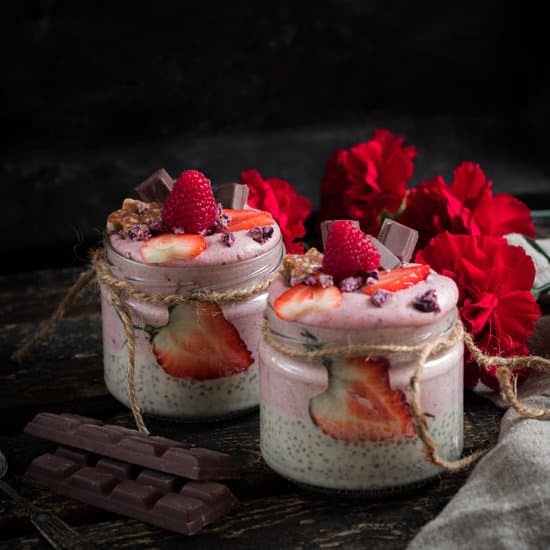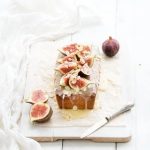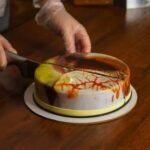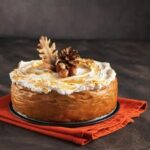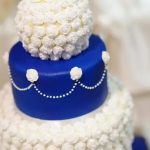Indulging in a slice of cake adorned with a heavenly layer of whipped cream frosting is an experience that brings joy to many. The light and airy texture, combined with the rich and creamy flavor, elevates any dessert to new levels of deliciousness.
In this article, we will delve into the art of whipped cream frosting for cake decorating, uncovering its history, offering tips and tricks for successful creations, and providing a step-by-step recipe for you to try at home.
To truly appreciate the magic of whipped cream frosting, it’s important to understand its origins. We will explore how this delectable creation has evolved throughout history and become a staple in cake decoration. From its humble beginnings as a homemade treat to becoming a popular choice in bakeries around the world, whipped cream frosting has captivated taste buds for centuries.
Choosing the right ingredients is vital when embarking on your whipped cream frosting journey. We will guide you through the process of selecting the perfect cream, sugar, and flavorings that will ensure a successful frosting every time. With helpful tips and recommendations on ingredient ratios, you’ll be equipped to create an irresistible topping that complements any cake flavor.
Prepare yourself to embark on a scrumptious adventure as we take you through detailed steps in creating your own luscious whipped cream frosting from scratch. Our comprehensive recipe includes precise measurements and mixing techniques to help you achieve that desired texture and stiffness. Whether you’re aiming for soft peaks or stiff peaks, our step-by-step guide will play an instrumental role in your cake decorating endeavors.
Get ready to transform ordinary cakes into stunning works of art using whipped cream frosting. From rosettes to borders and piping techniques, we will provide expert advice on using this versatile medium to create designs that are sure to impress. With our wealth of tips and tricks up your sleeve, you’ll become an adept cake decorator in no time.
Ready your mixing bowls, because the magic of whipped cream frosting awaits. Join us as we explore the wonders of this delightful creation and inspire you to experiment with flavors and designs that will leave everyone craving a second slice. So grab your whisk and let’s dive deep into the delectable world of whipped cream frosting for cake decorating.
Brief history of whipped cream frosting
Whipped cream frosting has been a beloved cake decorating staple for centuries, adding a light and fluffy touch to any dessert. The origins of this delectable frosting can be traced back to ancient times, where it was initially made by churning cream vigorously until it thickened. However, it wasn’t until the 17th century that whipped cream frosting truly gained popularity and became an essential component in cake decorating.
During the Renaissance period, French chefs began experimenting with different methods of preparing and serving food. They discovered that by whipping cream briskly, it would become lighter in texture and develop a frothy appearance. This revelation led to the birth of whipped cream frosting as we know it today. With its smooth consistency and delicate taste, it quickly became a favorite among bakers and confectioners.
Over time, the techniques for making whipped cream frosting have evolved significantly. In the past, whipping cream was typically done by hand using a whisk or even two wooden spoons. As technology advanced, electric mixers were introduced, making the process much quicker and more efficient. Today, stand mixers or hand-held electric mixers are commonly used to make whipped cream frostings, saving time and effort while still achieving excellent results.
Apart from its rich history, whipped cream frosting has also undergone various adaptations throughout the years. Different cultures have added their own twist to this versatile frosting by incorporating unique flavorings and ingredients such as vanilla extract, cocoa powder, liqueurs, or even spices like cinnamon or nutmeg. These variations have allowed bakers to customize their creations according to personal preference or cultural traditions.
The importance of choosing the right ingredients
Choosing the right ingredients is essential when it comes to creating a successful whipped cream frosting for cake decorating. Each component plays a crucial role in achieving the desired texture, taste, and stability of the frosting. Here are some important tips to consider when selecting the perfect cream, sugar, and flavorings for your frosting:
- Cream: The main ingredient of whipped cream frosting is, of course, cream. It is important to choose a high-fat content cream, such as heavy whipping cream or heavy cream. These creams contain enough fat to stabilize the whipped cream and hold its shape when piped onto cakes. Avoid using light creams or half-and-half as they do not have enough fat content for proper whipping.
- Sugar: Sugar not only adds sweetness but also helps stabilize the whipped cream frosting by absorbing excess liquid from the ingredients. When selecting sugar, opt for granulated sugar rather than powdered sugar. Powdered sugar contains cornstarch and can make the whipped cream frosting too thick and stiff.
- Flavorings: Adding flavorings to whipped cream frosting can elevate its taste and create endless possibilities for customization. Whether you prefer classic vanilla or want to experiment with different flavors like chocolate or coffee, choosing high-quality extracts or essences is key. Alternatively, you can also use other flavorings like fruit purees or melted chocolate for unique variations.
When working with these ingredients, it is crucial to keep them chilled before using them in your recipe. Cold ingredients whip better and hold their shape longer. Additionally, make sure that all equipment used – including mixing bowls, beaters, and spatulas – are clean and free from any traces of grease or oil.
By ensuring you select the right ingredients for your whipped cream frosting recipe, you are setting yourself up for success in creating a luscious and stable frosting that will beautifully enhance any cake design.
List of tips
- Choose high-fat content cream like heavy whipping cream or heavy cream to stabilize the frosting.
- Use granulated sugar instead of powdered sugar for proper consistency.
- Opt for high-quality flavorings such as extracts, essences, fruit purees, or melted chocolate to enhance the taste of the frosting.
- Keep all ingredients and equipment chilled before using them to ensure better results.
- Ensure that all equipment used is clean and free from any traces of grease or oil.
By following these tips, you can make informed choices when selecting the ingredients for your whipped cream frosting and create a delicious and visually stunning cake decoration.
Step-by-step recipe
Whipped Cream Frosting Recipe:
Ingredients
To create a luscious whipped cream frosting from scratch, you’ll need the following ingredients:
- 2 cups heavy cream: Ensure that your cream is cold as it helps with the whipping process.
- 1/4 cup powdered sugar: Powdered sugar dissolves easily and gives the frosting a smooth texture.
- 1 teaspoon vanilla extract: For a classic flavor, use pure vanilla extract. You can also experiment with other extracts like almond or coconut.
Instructions
Follow these steps to achieve a delicious whipped cream frosting:
- Chill your mixing bowl and beaters in the freezer for about 15 minutes. This will help keep the cream cool while whipping.
- Pour the cold heavy cream into the chilled mixing bowl. Using an electric mixer fitted with the whisk attachment, begin beating the cream on medium speed until it starts to thicken slightly.
- Gradually add in the powdered sugar, about a tablespoon at a time, while continuing to beat at medium speed. This will sweeten the frosting and stabilize it.
- After all the powdered sugar is added, increase the mixer speed to high and continue beating until stiff peaks form. Stiff peaks are achieved when you lift up the beaters and the whipped cream holds its shape without collapsing.
- Finally, add in your desired amount of vanilla extract and gently fold it into the whipped cream using a spatula or wooden spoon. Be careful not to overmix at this stage as it may cause deflation.
Tips for Success
- It’s crucial to use cold heavy cream straight from the refrigerator as warm cream won’t whip properly.
- If you desire additional sweetness, adjust the amount of powdered sugar according to your taste preference.
- Do not overbeat your whipped cream frosting as it can turn grainy or curdle. Keep a close eye on the texture and stop beating once stiff peaks form.
- Make the frosting just before you plan to use it as it has a tendency to deflate over time. If necessary, you can store it in the refrigerator for a short period before assembling your cake.
By following this step-by-step recipe, you’ll have a luscious whipped cream frosting that is perfect for decorating cakes. The next section will delve into techniques for achieving the ideal texture and stiffness for cake decorating, ensuring your creations turn out beautifully every time.
Perfecting consistency
Whipped cream frosting is not only delicious, but it also adds a delicate and light texture to cakes, making it a favorite choice for cake decorators. Achieving the perfect consistency is crucial in order to create beautiful designs and decorations that hold their shape. In this section, we will explore the techniques for achieving the ideal texture and stiffness for whipped cream frosting.
Understanding Soft Peaks
One of the first steps in achieving the perfect consistency for whipped cream frosting is understanding soft peaks. Soft peaks are formed when you lift the beaters from the mixture and the mixture forms gentle peaks that curl over softly when the beaters are removed. This is the initial stage of whipping cream and indicates that it has reached a light consistency.
Reaching Stiff Peaks
To achieve stiff peaks, continue beating the whipped cream after reaching soft peak stage. Stiff peaks are formed when you lift the beaters from the mixture and the mixture forms firm peaks that hold their shape without collapsing. This stage is crucial for cake decorating as it ensures that your designs will remain intact on top of your cake.
It is important to note that care should be taken not to over-whip your cream as it can result in curdling or butter formation. Over-whipping causes the fat content in the cream to separate from its liquid content, resulting in an undesirable texture and taste.
Tips for Perfect Consistency
To achieve perfectly whipped cream frosting, here are some tips:
- Use cold utensils and bowls: Place your whisk attachments or beaters along with your mixing bowl in the refrigerator before starting. Cold utensils help stabilize whipped cream and facilitate quicker whipping.
- Chill your ingredients: Prior to whipping, ensure that both your heavy cream and any flavorings you plan to use are well chilled. Cold ingredients whip faster than room temperature ones, resulting in a smoother consistency.
- Gradually add sugar: Add sugar gradually while whipping the cream. This allows the sugar to dissolve and incorporate well into the cream, resulting in a more stable whipped cream frosting.
By following these techniques and tips, you can achieve the ideal texture and stiffness for your whipped cream frosting. Mastering these skills will elevate your cake decorating game and bring your creations to a whole new level of beauty and elegance.
Flavor variations and additions
Whipped cream frosting is a versatile base that can be easily transformed with different flavors and mix-ins to suit any occasion or personal preference. Adding unique flavors can take your cakes to the next level, making them even more delicious and satisfying. Let’s explore some popular flavor variations and creative mix-ins that you can incorporate into your whipped cream frosting.
One classic flavor option is vanilla. Vanilla extract or vanilla bean paste can be added to the frosting mixture for a subtle yet delightful taste. If you’re looking for a richer flavor, consider incorporating chocolate into your whipped cream frosting. Cocoa powder or melted dark chocolate can be blended with the cream mixture to create a smooth and indulgent frosting that pairs perfectly with chocolate cakes.
For those seeking fruity flavors, there are countless options available. You can add fruit extracts such as lemon, orange, or raspberry to infuse the whipped cream frosting with a burst of refreshing citrus or berry notes. Alternatively, pureed fruits like strawberries or mangoes can also be folded into the mixture for a vibrant and natural taste.
If you prefer nutty undertones in your frosting, consider incorporating ingredients like almond extract or finely chopped nuts. Almonds add a delicate aroma while enhancing the overall flavor profile of your whipped cream frosting. Other nuts like pecans or walnuts can also provide a satisfying crunch when sprinkled on top of the frosted cake.
In addition to these classic flavors, feel free to get creative by experimenting with unique combinations like mocha (coffee + cocoa powder) or mint (mint extract + crushed peppermint candy). The possibilities are endless when it comes to enhancing the taste of your whipped cream frosting.
By exploring different flavor variations and creative mix-ins, you can truly customize your whipped cream frosting based on your preferences and the occasion at hand. Whether you’re aiming for a timeless and elegant vanilla flavor or want to create a tropical delight with coconut and pineapple, don’t be afraid to get adventurous and let your imagination run wild. Your cakes will surely impress and delight everyone lucky enough to take a bite.
Tips and tricks for successful cake decorating
Whipped cream frosting is not only delicious, but it also offers a wide range of possibilities for cake decorating. With its light and fluffy texture, whipped cream can be easily shaped and piped into various designs to create stunning cakes that are both beautiful and tasty. In this section, we will explore some expert tips and tricks for successful cake decorating using whipped cream frosting.
One of the most important aspects of using whipped cream frosting for cake decorating is achieving the right consistency. Before starting any design, it is essential to ensure that your whipped cream is at the ideal texture and stiffness. To do this, it’s crucial to whip the cream just until soft peaks form.
Soft peaks should hold their shape briefly before slowly collapsing back into themselves. Be careful not to over-whip the cream, as this can lead to a grainy or butter-like consistency.
Once you have achieved the desired consistency, you can begin using different piping techniques to decorate your cake. Piping bags fitted with various tips can help you create intricate designs like borders, rosettes, flowers, or even personalized messages on your cakes. It’s recommended to start with a round or star tip for basic piping techniques and then progress to more advanced designs as you become more comfortable.
When piping with whipped cream frosting, it’s important to keep in mind that it has a lower stability compared to other types of frostings like buttercream or fondant. One way to enhance stability is by adding gelatin to the mixture during the whipping process. The gelatin helps stabilize the whipped cream and prevents it from deflating or losing its shape too quickly.
To further enhance your cake decoration skills with whipped cream frosting, consider adding decorative elements such as fresh fruit slices, chocolate curls, sprinkles, or edible flowers on top of your designs. These additions not only add visual appeal but also contribute interesting flavors and textures to your creations.
To summarize, here are some key tips and tricks for successful cake decorating using whipped cream frosting:
- Whip the cream to the ideal consistency of soft peaks.
- Use piping bags and different tips to create various designs.
- Enhance stability by adding gelatin during the whipping process.
- Experiment with decorative elements like fruit slices, chocolate, or edible flowers.
By following these expert suggestions, you can take your cake decorating skills to new heights and create stunning, delicious masterpieces using whipped cream frosting.
Troubleshooting common issues
Whipped cream frosting is a delicious and versatile option for cake decorating, but it can sometimes present challenges. In this section, we will explore some common issues that may arise when working with whipped cream frosting and provide solutions to ensure a smooth and flawless finish.
One common problem that bakers may encounter when making whipped cream frosting is deflation. This occurs when the whipped cream loses its volume and becomes flat or runny. To prevent deflation, it is important to make sure that the cream is properly chilled before whipping and that all equipment, including the mixing bowl and beaters, are also cold. Additionally, adding a stabilizer such as gelatin or cornstarch can help to maintain the structure of the whipped cream.
Another issue that may occur is curdling, which happens when the fat in the cream separates from the liquid, resulting in a lumpy texture. To avoid curdling, it is crucial to whip the cream slowly and gradually add sugar as you go. Overwhipping can also cause curdling, so it’s important to stop whipping once soft peaks form.
One of the most frustrating problems with whipped cream frosting is when it slides off the cake or fails to hold its shape. This can happen if the cake or frosting isn’t properly chilled or if the weather is particularly hot and humid.
To prevent this issue, make sure your cake has cooled completely before applying the frosting and refrigerate it for at least 30 minutes before serving. You can also stabilize your whipped cream by adding a small amount of cornstarch or powdered sugar while beating.
| Common Issue | Solution |
|---|---|
| Deflation | – Make sure cream and equipment are cold
|
| Curdling | – Whip the cream slowly and gradually add sugar
|
| Sliding off the cake/ Holding shape | – Ensure the cake has cooled completely before frosting
|
Storage and serving recommendations
Storing and serving cakes frosted with whipped cream frosting requires careful consideration to maintain the texture, flavor, and overall quality of the dessert. Whipped cream frosting is a delicate topping that can easily deflate or become watery if not stored properly. Therefore, it is important to follow best practices for storing and serving these cakes.
One of the most crucial aspects of storing cakes with whipped cream frosting is refrigeration. Due to its high dairy content, whipped cream frosting should always be kept in the refrigerator to prevent spoilage and maintain its stability. When refrigerating a cake with whipped cream frosting, it is essential to cover it well with plastic wrap or a cake dome to prevent any sort of contamination.
The recommended timeframe for storing cakes with whipped cream frosting is typically no more than 2-3 days. After this time, the whipped cream may start to break down and lose its fluffiness.
It is advisable to consume the cake as soon as possible after preparing it for optimal taste and texture. Additionally, if you are planning on serving the cake outside during warmer weather, it is important to keep it in a cool place until ready to serve and avoid leaving it exposed to direct sunlight or heat for extended periods.
When serving a cake frosted with whipped cream frosting, it is crucial to handle it with care. Whipped cream can be soft and delicate, so using a serrated knife will help prevent squishing or flattening the layers when cutting slices. It is also recommended to use a spatula or an offset spatula for smooth spreading of the frosting onto each layer. Finally, garnishing the cake just before serving will help preserve the appearance and freshness of the whipped cream frosting.
By adhering to proper storage guidelines and employing cautious serving techniques, you can ensure that your homemade cakes frosted with whipped cream remain deliciously light and airy until they are enjoyed by all. Remember that although whipped cream frosting adds an extra layer of decadence and flavor to your cakes, it requires a bit more attention to preserve its delicate nature. With these best practices in mind, you can confidently create and serve beautiful and scrumptious cakes for any occasion.
Conclusion
In conclusion, whipped cream frosting is a versatile and beautiful option for cake decorating that allows for endless creativity and experimentation. With its light and airy texture, it provides a refreshing alternative to traditional buttercream frostings, adding a delicate touch to any dessert. Throughout this article, we have explored the history, importance of ingredients, step-by-step recipe, consistency techniques, flavor variations, cake decorating tips and tricks, troubleshooting solutions, as well as storage and serving recommendations for whipped cream frosting.
The origins of whipped cream frosting can be traced back to ancient civilizations who discovered the magic of whipping cream. Over time, this technique has evolved and become an essential part of cake decoration. The right combination of ingredients is crucial in achieving a successful frosting. Choosing high-quality cream with a high fat content and selecting the perfect sugar and flavorings will ensure a delicious result.
For those interested in trying their hand at creating whipped cream frosting from scratch, we have provided a detailed step-by-step recipe that includes precise measurements and mixing techniques. Additionally, we have discussed the importance of achieving the ideal consistency which can range from soft peaks to stiff peaks depending on your desired design.
To add even more flair to your creations, we have explored various flavor variations and mix-ins that can take your whipped cream frosting to the next level. From classic vanilla or chocolate to more adventurous fruity or nutty options – there are no limits to what you can create.
We have also shared expert tips and tricks for successful cake decorating using whipped cream frosting. From piping techniques for intricate designs to creating rosettes and borders – these methods will elevate your cakes into stunning masterpieces.
Lastly, we addressed common troubleshooting issues such as deflation or curdling as well as providing recommendations on proper storage and serving practices. By following these suggestions, you can ensure that your cakes stay fresh-looking and delicious even after being frosted with whipped cream.
Frequently Asked Questions
Can you decorate a cake with whipped cream frosting?
Yes, it is definitely possible to decorate a cake with whipped cream frosting. Whipped cream frosting is a light and fluffy topping that can be easily piped onto cakes using various techniques.
It provides a smooth and creamy texture that adds an elegant touch to any cake. The versatility of whipped cream frosting makes it suitable for both simple and intricate decorations, allowing you to create beautiful designs and patterns on your cake.
Is whipped cream frosting good for decorating?
While whipped cream frosting is delicious and wonderful for taste, it does have some limitations when it comes to decorating. Compared to other types of frostings like buttercream or fondant, whipped cream frosting is softer and less stable, meaning that it may not hold up as well under certain conditions or elaborate decorations.
It tends to be more delicate and sensitive to heat, so it is important to keep the cake refrigerated until serving time to maintain the shape and consistency of the decoration.
How do you harden whipped cream frosting?
Hardening whipped cream frosting can be a challenge since its main characteristic is its airy and fluffy texture. However, there are ways to make whipped cream frosting more stable if you want it to hold its shape for longer periods of time. One method is adding stabilizers such as gelatin or cornstarch into the mixture while whipping the cream.
These ingredients help give structure and stability to the frosting, allowing it to harden slightly without compromising its lightness completely. Another technique involves refrigerating the cake immediately after applying the whipped cream frosting, which helps firm up the fats in the cream and give the decoration a bit more stability. Keep in mind that hardened whipped cream frosting will not become as firm as other types of frostings like buttercream or fondant, so it’s important not to expect it to become completely solid.

Welcome to our cake decorating blog! My name is Destiny Flores, and I am the proud owner of a cake decorating business named Cake Karma. Our mission is to provide delicious, beautiful cakes for all occasions. We specialize in creating custom cakes that are tailored specifically to each customer’s individual needs and tastes.

